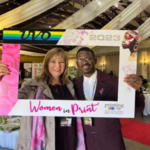Despite off-centre media focus and issues like race topping the employment equity agenda in business, gender equality continues to gain traction in the market and demands attention.

This is according to Nicol Myburgh, Head of Human Resources at CRS Technologies, a leading provider of HR and HCM solutions and services, who adds that the Employment Equity Act is beginning to make a significant difference.
“Although the Employment Equity Act was gazetted in 1998, it is only been gaining traction recently on the gender front with the large focus on gender issues in recent years. The purpose of the Act is to achieve equity in the workplace by promoting equal opportunity and fair treatment in employment through elimination of unfair discrimination and implementing affirmative action measures. However, the major focus and media attention has mostly been on race and not gender,” says Myburgh.
The CRS Technologies executive explains that statistically, South Africa has some work to do to fully implement the principles and objectives of this legislation.
Myburgh refers to data sourced from the World Economic Forum which ranks the country in 17th position out of 136 nations in terms of gender equality.
He adds that the South African gender pay gap is estimated, on average, to be between15% to 17%.
“This implies that a South African woman would need to work two months more than a man to earn the equivalent salary that he would earn in a year,” adds Myburgh.
While the Employment Equity Act seeks to enforce the principle of equal pay for equal value, the burden now rests with HR management practitioners to uncover potential cases of pay inequity and effectively address these.
This has become even more relevant and necessary given the prevalence of female senior management across many industries.
Myburgh says that while it is true that more women are securing top management positions today than ever before, this does vary from company to company – and many of the larger organisations actively work towards correcting this gender gap.
“The problem lies with small-to-medium enterprises, I have found that with many smaller organisations the perception of ‘this is a man’s job’ still exists. However, the pressure exerted from their clients to obtain a certain BBBEE level has helped correct this. Although it hasn’t changed their perception, it has, at least changed their approach,” he says.
From a CRS Technologies perspective, the key message to the market is that the gender gap is not just an equity issue, it is, in many cases, hindering employers from obtaining top, sought-after skills because of their own perceptions regarding gender.
- MRF Unveils Latest MAPS® Data - 20th February 2025
- The BRC announces changes to the board and updates for 2025 - 17th December 2024
- Top 50 DSTV TV programmes – October 2024 - 12th November 2024





